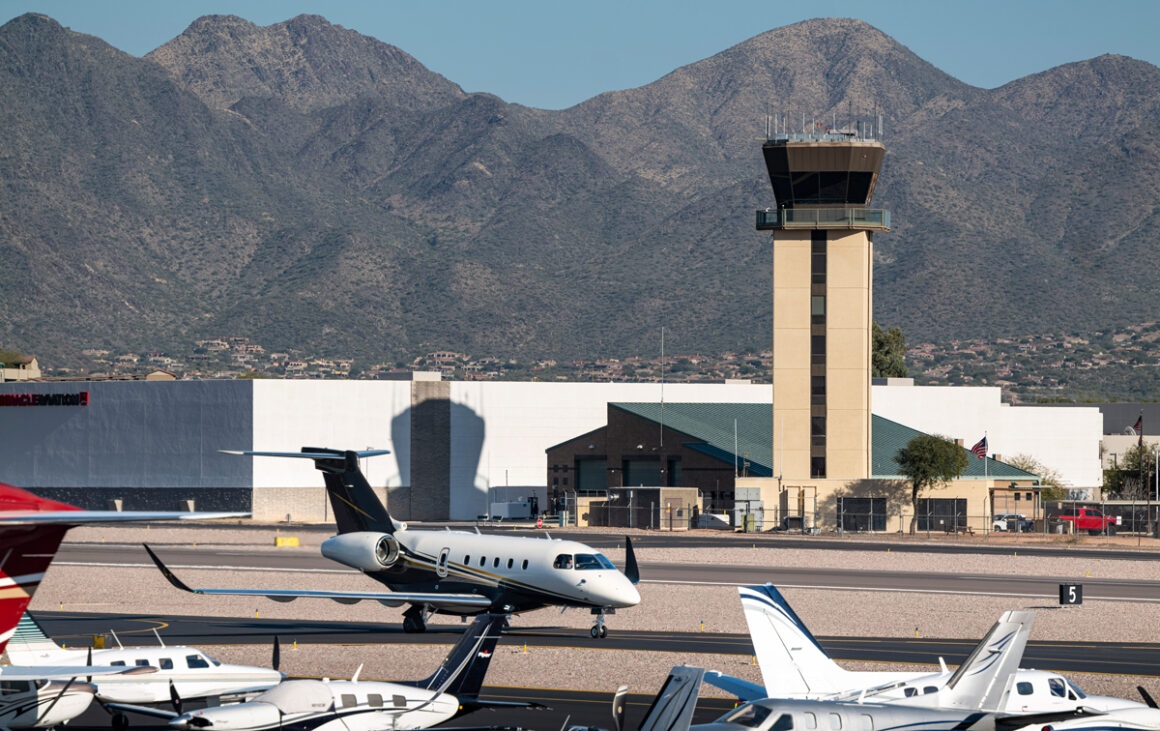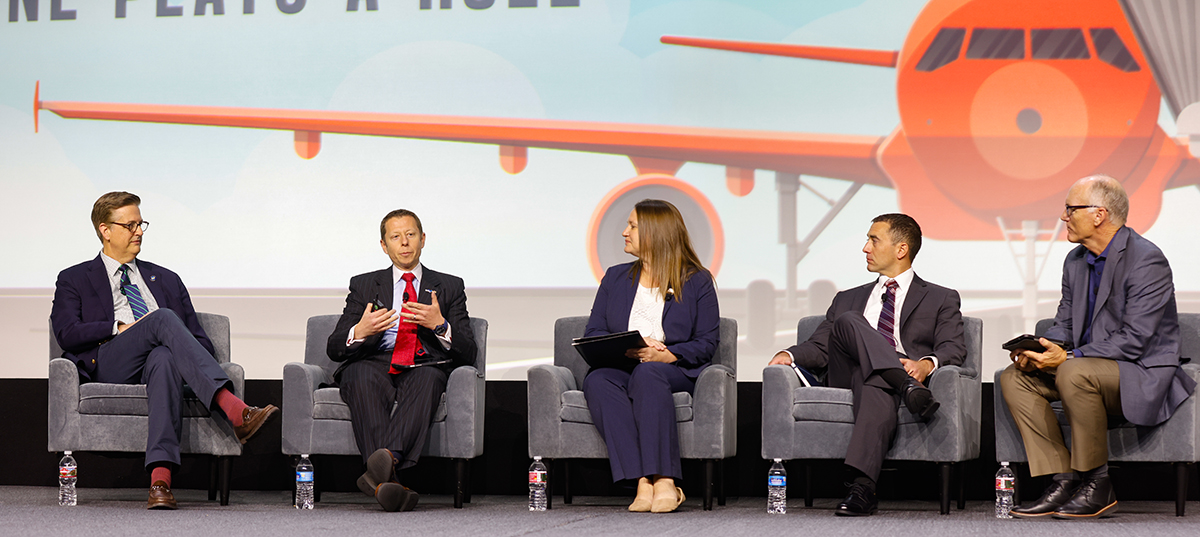
Sept. 21, 2023
Pilots and air traffic controllers can minimize the likelihood of an aviation incident by working together in challenging situations, such as when an aircraft is navigating a complicated taxi route, according to Alex Gertsen, a pilot and NBAA’s director of airports and ground infrastructure.
“It’s really important from the pilot perspective that we brief ourselves, that we look at the taxi route,” Gertsen told an audience of air traffic controllers during a Sept. 19 panel discussion on surface safety at the National Air Traffic Controllers Association Communicating For Safety conference in Las Vegas.
“But also, as you’re looking at us moving around on the surface from the tower, your help is really important to make sure that we’re stopping at the right places and are following the right route,” he added.
Gertsen said general aviation pilots face unique challenges compared to their airline counterparts, including flying into a greater variety of airports, working longer hours and sometimes serving as the sole crew member. “Each day is different, so ultimately we’re relying on controllers to make sure that we’re set up for success,” he said.

General aviation flights are often short, providing little time to prepare for landings. “A lot of times, you’re in busy terminal airspace the whole time, so you’re switching frequencies, you’re looking for traffic,” Gertsen said. “It can be very intense on the flight deck. We need support from the controllers to make sure that we have the information that we need and have it given to us in the appropriate chunks.”
The ongoing switch from radio navigation to satellite navigation is another challenge for general aviation pilots that controllers should take into account, he said.
Panelists said pilots and controllers could learn from each other by having more communication outside of their daily routines. Informal monthly meetings over coffee, pilot visits to control towers and centers, and controller visits to flight decks were among the ideas that came up.
Panelists also praised new technology to improve safety. Gertsen noted the ForeFlight app, an electronic flight bag, helps improve situational awareness for pilots and the runway extension feature in the app can help line up with the correct runway.
Other panelists were NATCA performance-based navigation co-lead Eric Johnson, NATCA national runway safety representative Bridget Singratanakul, and Doug Willey, chair of the Air Line Pilots Association, International Air Traffic Services Group. Richard McSpadden, senior vice president of the Aircraft Owners and Pilots Association Air Safety Institute, moderated the discussion.


 International Business Aviation Council Ltd.
International Business Aviation Council Ltd.